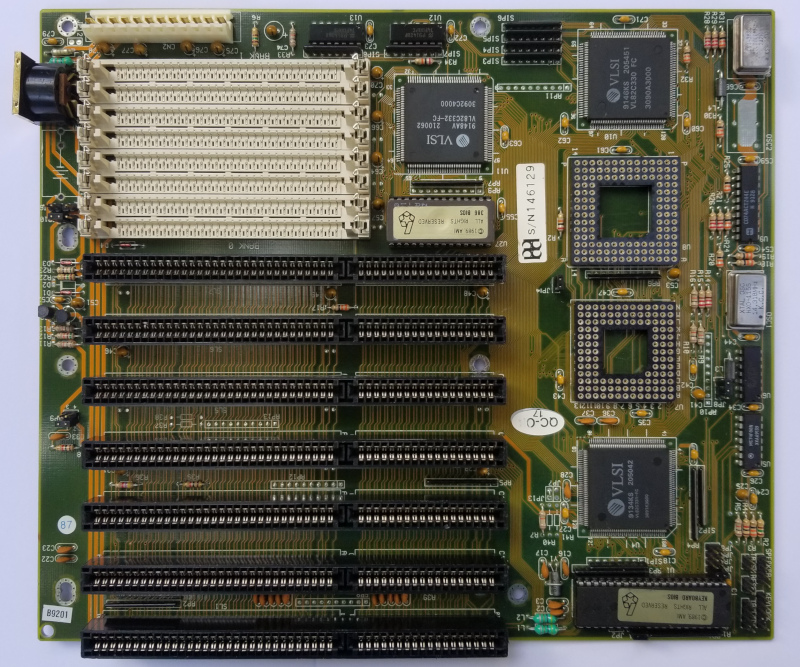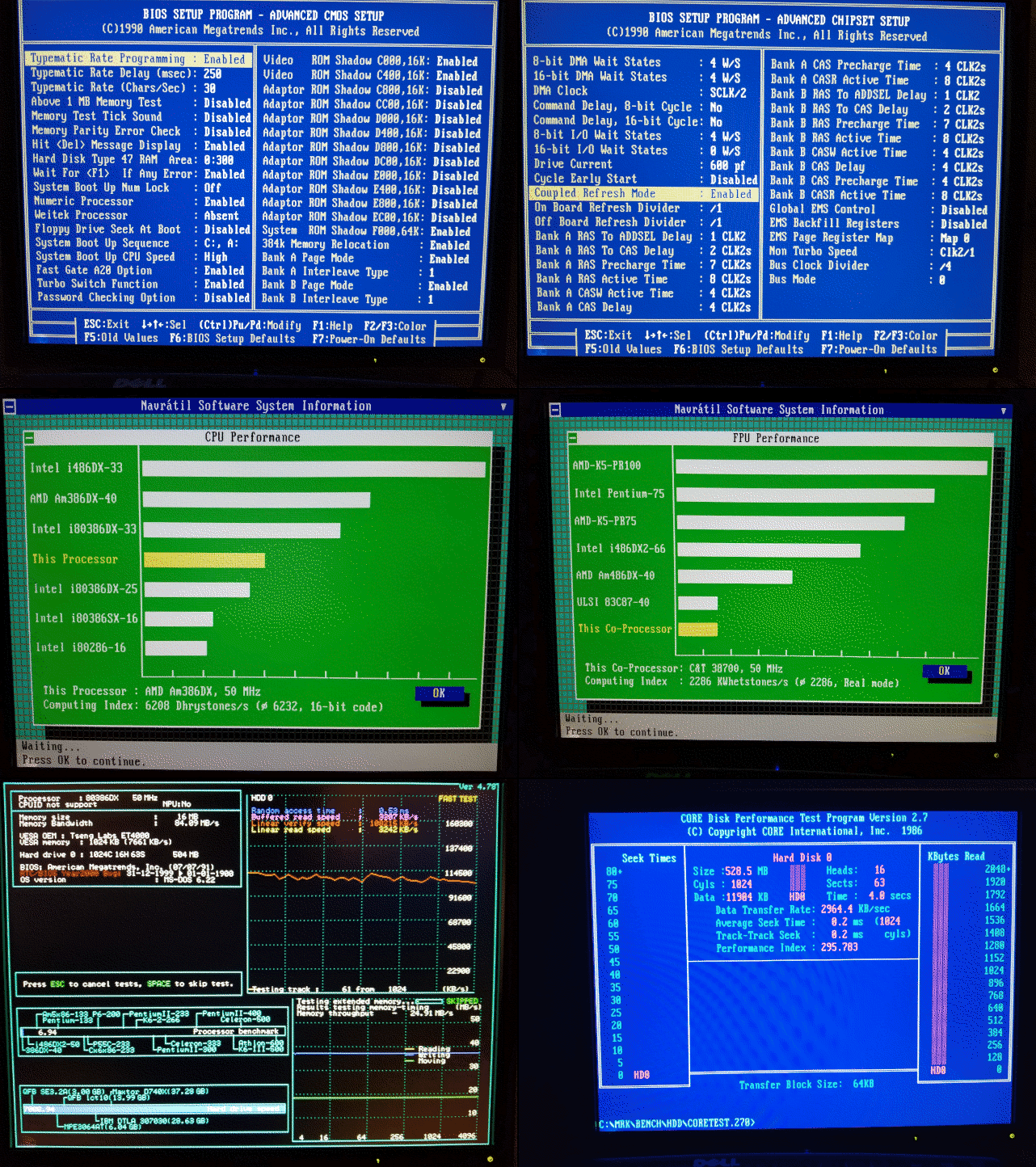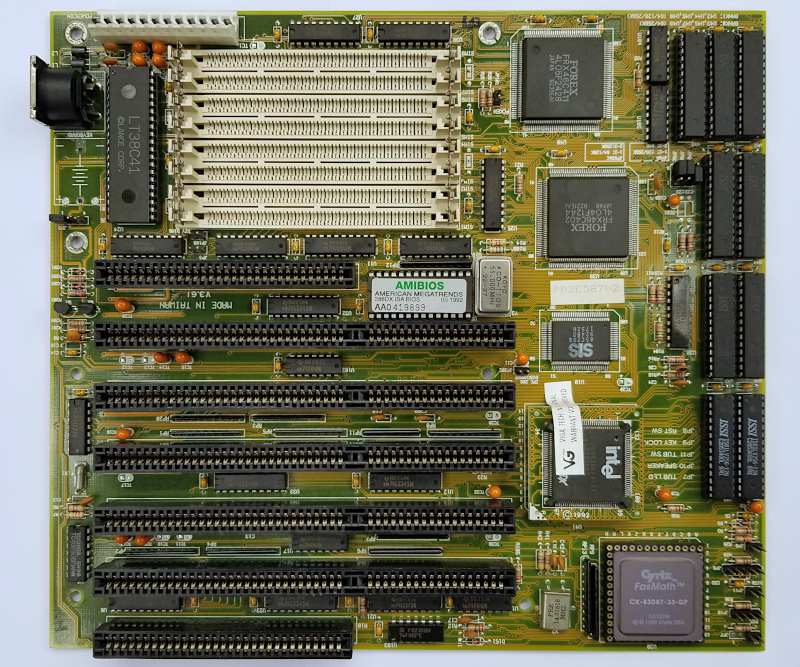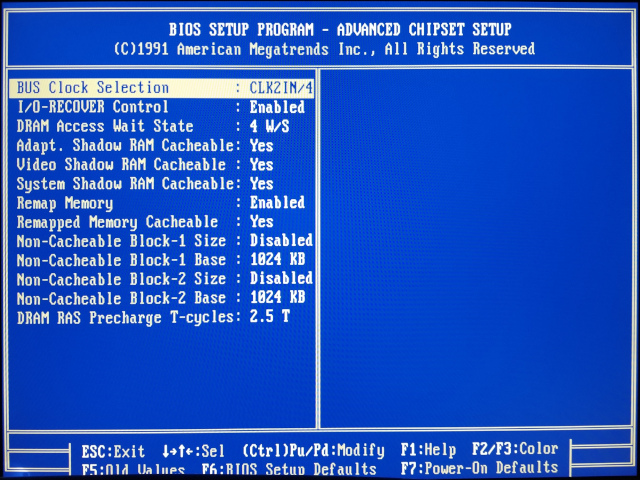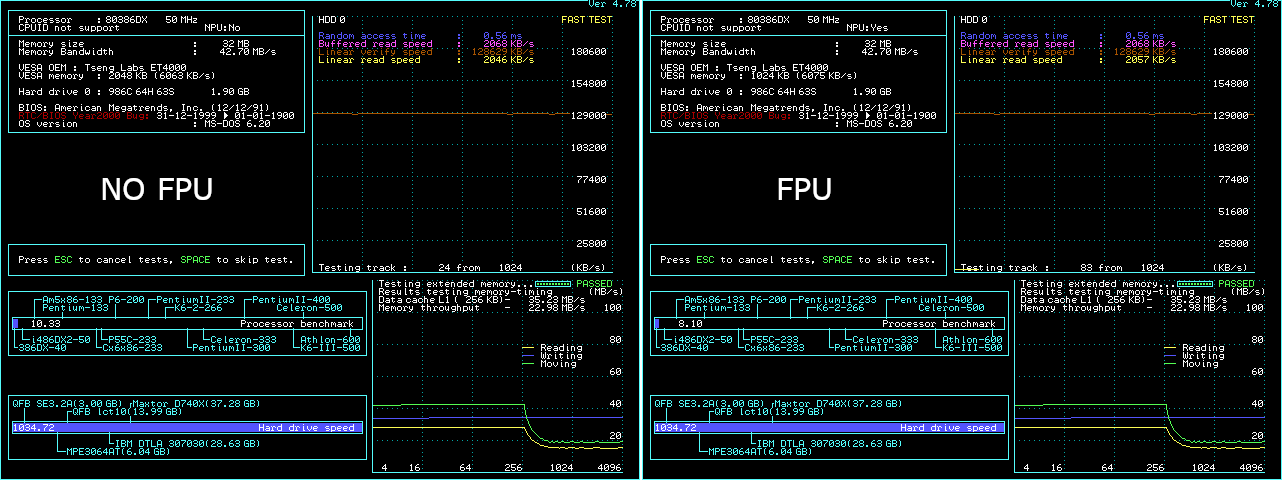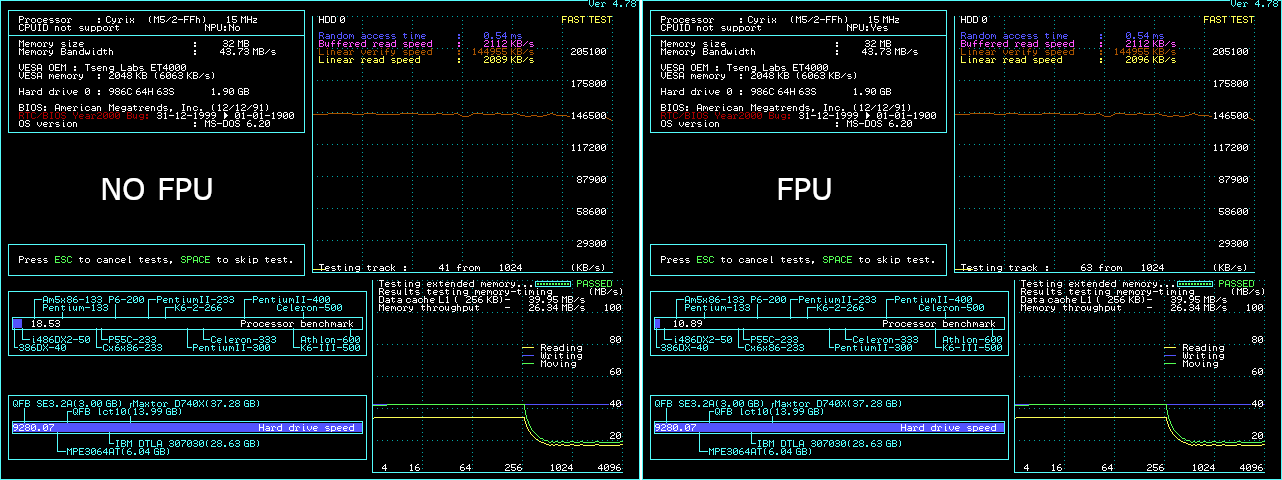@AnonymousCoward and pshipkov
Trident really made way too many ICs to take account of.
There are about 55 different sub-versions for each too! 9440, 9440AGi, 9440-1, etc.
Thing is, I have found that the 9440 is honestly good in all forms as a upper-mid tier card.
Not the best, not the worst. Stable, predictable, and pretty fast.
The 8900 has some good cards, and there are some implementations that are pretty quick.
Feipoa's chart here really highlights that the 8900D-R in at least one implementation is quite good for DOS graphics.
The 96xx PCI cards were definitely pretty good, agreed there. I believe the 98xx cards were/are decent too.
The 9880 AGP is at least on par with a Voodoo 2, afaik. That's not too awful.
I hope we can cook up more as well! I wonder why there's a DOS-V intended VLB card as well.
I always figured the same re: PC-98 and proprietary setups.
Good to know with regard to the 9600 series. I guess the Windows acceleration is decent on them then?
The beefier RAMDAC and 64-bit setup sound nice. Will have to pick one up for messing around with.
------
@pshipkov
Liking the numbers on the 9440 and 9685.
Great to see them both together, thank you for that!
Curious about that 9685 UUD PC Player result. Otherwise makes sense.
96xx faster in Windows, great in DOS. 9440 great in DOS and solid in Windows.
Curious Forex assemblies. I've always wondered about them.
They made a VLB Pentium chipset, but I always thought they were like Efar and got out of the game early and just relabeled.
This 411/402 assembly is nice. CPU-intensive metrics are great.
A shame about the BL3 and GD5434 issues.
Being faster than UMC480 is interesting.
I wonder if any early 486 boards used this setup?
A FRX84C421 w/ CPU socket might be worth its weight w/ WB L2.
Really interested in this setup and in Forex more generally.
Seems like a good avenue to develop and explore.
------
Ran some quick tests on the Intel Batman's Revenge Socket 4 board and compared it in DOS interactive graphics to the SuperEISA running at 160MHz. To no surprise the SuperEISA creams the competition and gets close in Quake. Both were tested with near-equivalent (as near-equivalent as possible) VGA cards; the ARK1000VL and ARK2000PV.
The attachment Batman's Revenge.jpg is no longer available
The attachment BAT-P60.jpg is no longer available
The attachment P66-BAT.jpg is no longer available
The attachment Dos Interactive Graphics - P60-66 vs Am5x86-160.jpg is no longer available
Wanted to add some diversity to the mix. Figured Socket 4 would be an interesting angle, being a logical competitor to the 486.
The P60/66 are interesting historically for a few reasons. There's the FDIV bug, the transition to a 60/66MHz FSB, and just early P5 weirdness.
All things considered, this was a fun little test.
BIOS settings were as follows:
PCI Byte Merging Enabled
ISA Speed Enhanced
The Batman's Revenge itself deserves a few words itself.
It's a good board; it lacks any real "options," like any Intel board from any era, but it's stable and predictable.
Timings are not the fastest nor the slowest. BIOS updates are simplistic and the BIOS interface is cut-down.
IDE drives > 2.1GB lock the board. It will not POST without XT-IDE or some other drive overlay.
It is available in two variants: one supports the 5.15v "specified/required" for 66MHz operation; the other lacks the circuitry, but still can do 66MHz FSB.
The tested board does not have the 5.15v option.
The Pentium 60/66 are often called good alternatives to a DX4-100. This is true to the extent that the ALU is nothing to write home about if all you are doing is DOS gaming. For DOS interactive graphics--the hallmark and keystone for most benchmarks on Vogons--the Pentium 60/66 are best avoided. They're expensive these days, hard to find, and more-or-less lack the popular "retro" factor that surrounds the 486 these days. There's no doubt that grabbing an average 486 board and slapping a DX4 or Am5x86 in it is probably a better bet--these days, at least.
They are hot, face immature/bugged "standard" Intel platforms (430LX), and yet they shine, despite it all.
The 430LX bugs are worth discussing first. It appears that the Intel 430LX could not properly support WB L2 cache. Considering that Intel had such functionality implemented in the 420-series Saturn/Saturn II/Aires chipsets, this is incredibly surprising and confusing. The 430LX is non-integrated. It's four chips, and that's not counting a fifth if you want EISA. Not awful, but again, there's single-chip 486 solutions offering comparable/better performance. Chips manufactured before 1994 seem to have some issues with PCI/EISA bridging. This is, frankly, unacceptable. It seems that different implementations contained various bug-fixes and revisions; I have never personally seen a singular chipset redesigned over a two-year period of implementation to this extent.
Clock-for-clock, the P60/66 are impressive. We see some metrics here where even in the 486's wheelhouse of DOS interactive graphics, the P60/66 does okay. It's not far off in PC Player, Superscape, or even Wolf3D, despite the near-100MHz clock speed deficit. Impressive, especially for fast tech on an old, hot node.
The P60/66 also isn't quite that hot. A good fan and heatsink are really all you need. The fan isn't even necessary if there's airflow around a large enough heatsink.
Despite its reputation as a clunker; as a hot, overpriced chip not worth its weight in gold (and it's a heavy, large one 😀 ); as an under-achieving, dismal piece of history that led to the legendary P54 chips and beyond, the P5 is a solid foundation for what it is. It's a spartan chip, sure, and the platform is woefully immature, but chipset options out the wazoo that make exploration fun. The performance is good, not great, and with a better chipset like the SiS50x (to be tested later 😀) that allows for the of EDO, things should get interesting. VLB Pentium boards are great to mess with too, and they are pretty common on Socket 4 assemblies.
Impressions: Predictable, but intriguing. Clock-for-clock impressive performance. Nothing out of the ordinary motherboard-wise. Intel Batman's Revenge is typical "Intel." P60/66 interesting avenues. Nothing Am5x86-level, but nothing to scoff at.
